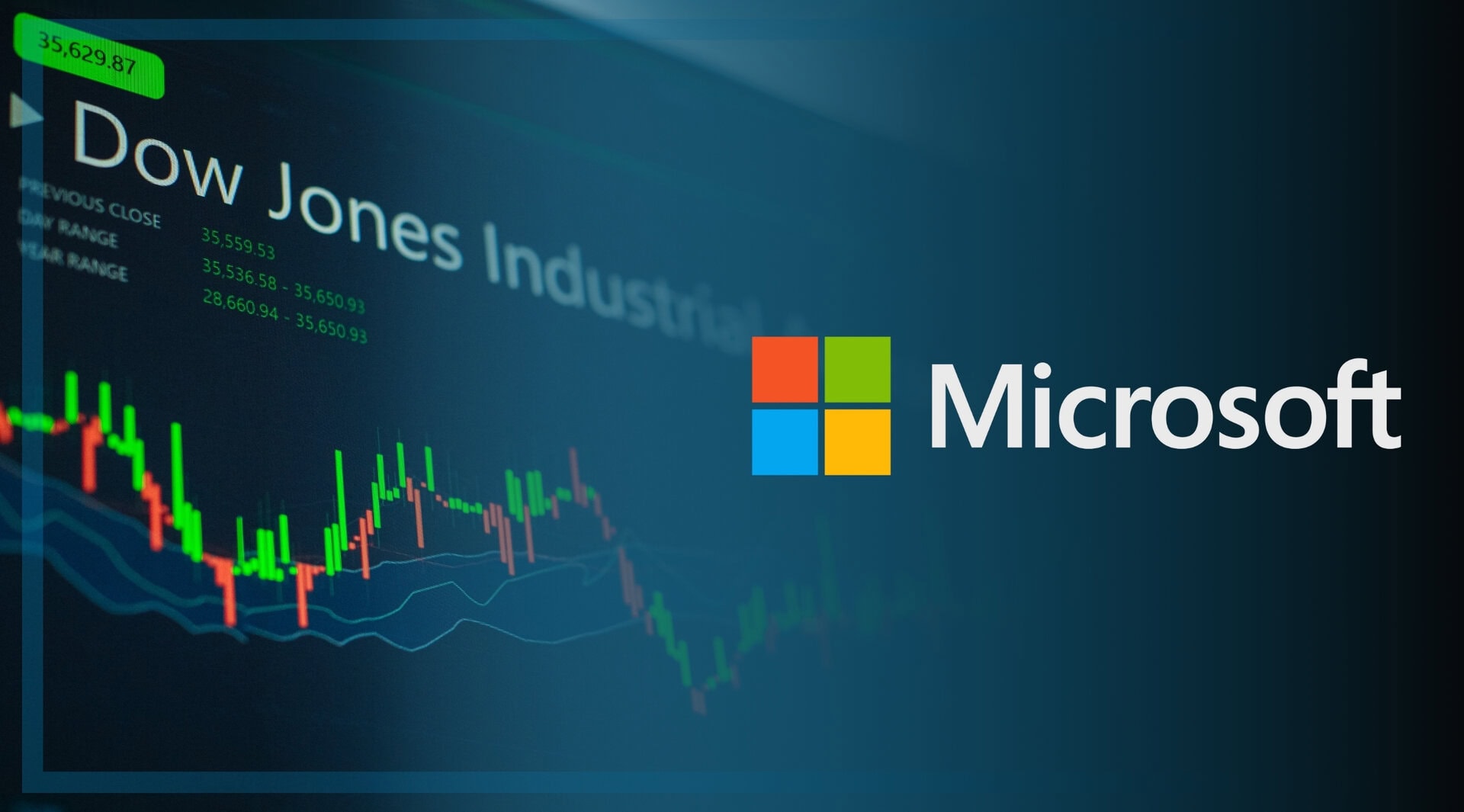Microsoft is more than just a technology company. It is a key player in the global economy. In 1999, Microsoft joined the Dow Jones Industrial Average (DJIA), marking a vital moment for both the company and the index. At the time, the Dow was changing. It was shifting from focusing mostly on manufacturing to highlighting technology leaders.
Today, Microsoft leads in cloud computing, artificial intelligence (AI), and enterprise solutions, driving its growth and boosting its stock market influence.
This article explores how Microsoft’s stock performed before and after joining the Dow Jones. We will discuss the company’s progress in AI, cloud computing, and financial services. Finally, we will examine how these factors tie into Microsoft’s place in the global economy.
The DJIA’s Evolution and Microsoft’s 1999 Inclusion
Since its establishment, the DJIA has undergone 59 adjustments, mirroring economic changes. General Electric, with a cumulative presence of 122 years, was the longest-lasting index member until its final exit in 2018. The changes to the index enable it to display modern American economic characteristics, which made Microsoft’s 1999 inclusion a key moment during the tech boom period.
Microsoft Joins the DJIA: A Tech Boom Milestone
Microsoft joined the Dow Jones Industrial Average on November 1, 1999, by replacing Chevron, which had been part of the index since 1930. With the commencement of the tech and dot-com booms, the technology sector’s economic value was increasing.
During that period, Microsoft held a dominant position in the software industry through its Windows operating system and Office suite products. The decision to admit Microsoft and Intel reflected technology’s growing importance, as these Nasdaq-listed companies joined the Dow.
Microsoft stock experienced significant growth throughout 1998 until it reached $21.26 by the end of the year, after adjusting for stock splits because of its market leadership position.
Microsoft’s Stock Growth Before 1999
Microsoft’s technological expansion and innovative products drove its stock value to exceptional heights before its 1999 Dow inclusion. MSFT stock experienced extraordinary growth since its first public offering in 1986 until 1999.
The company maintained its position as the leading software provider for personal computing through Windows and Office while expanding into hardware with the Xbox. During this period, Microsoft faced a substantial increase in demand, which caused its revenue to increase from $6 billion in 1995 to $23 billion in 2000.
☁️ Microsoft $MSFT analysis🔎
— Investing visuals (@InvestingVisual) March 23, 2024
A one pager with all key information of the worlds most valuable company👇
Main takeaways 📢
• $MSFT is deeply entrenched in many modern businesses. Either through their cloud offering Azure or their Microsoft 365 subscriptions
• Well positioned… pic.twitter.com/bH0zuXu6Xv
Microsoft’s Stock Performance Since 1999
Since joining the DJIA, Microsoft has continued to perform strongly, adapting to economic cycles and technological shifts. While the early 2000s saw more difficult times for tech companies, Microsoft’s stock price reached an all-time high of $59.63 on December 27, 1999, just weeks after joining the Dow, indicating a significant post-DJIA surge. This was part of a 67.3% increase for the year, from December 31, 1998, to December 31, 1999, showing a strong market reaction to Microsoft joining the DJIA.
In recent years, Microsoft’s (MSFT) performance has been exceptional, especially with advancements in AI and cloud computing. For example, in Q1 2025, Microsoft’s stock (MSFT) jumped nearly 8% after beating earnings expectations. This was driven by its Azure cloud business and AI initiatives. This resilience highlights Microsoft’s ability to maintain growth, with its stock price at $458.87 as of writing.
Microsoft’s Leadership in AI and Financial Services
Microsoft’s focus on AI and cloud computing has driven much of its recent success, according to reports from Disruption Banking. For example, a September 2024 article notes Microsoft, BlackRock, GIP, and MGX launched a partnership to raise $30 billion in private equity for AI infrastructure, with the potential to mobilize $100 billion, including debt financing. This shows Microsoft’s strong commitment to leading the AI revolution. Their early investments in OpenAI have also paid off, boosting Azure’s growth and supporting OpenAI’s $157 billion valuation.
Microsoft is working with banks and financial firms to use AI and cloud technology. Disruption Banking reported in June 2022 that Microsoft and CaixaBank opened an AI Innovation Lab in Barcelona. This lab aims to build AI solutions and metaverse projects for financial services. This shows Microsoft’s role in changing the finance sector.
Microsoft’s cloud platform, Azure, plays a big part in these efforts. A Disruption Banking article from July 2023 noted that, according to Microsoft’s chairman and CEO, Satya Nadella, Azure made up over half of Microsoft’s $110 billion cloud revenue in the fiscal year 2023. It was the first time it passed that important milestone.
Microsoft is also adding AI to productivity tools like Microsoft 365, Teams, and Copilot. Examples include GitHub Copilot and Meeting Prep for Financial Services in Teams. On February 9, 2022, a Disruption Banking press release said Microsoft expanded its work with Refinitiv. Together, they launched Refinitiv AI Alerts inside Microsoft Teams. This helps users save time by delivering important insights quickly.
All these projects show Microsoft’s ongoing goal: using technology to improve efficiency and user experience in financial services.
Navigating Regulatory Hurdles and Market Perceptions
Microsoft has faced some regulatory hurdles. In April 2023, the UK’s Competition & Markets Authority blocked Microsoft’s $68.7 billion bid to buy Activision Blizzard, as reported in May 2023. Microsoft appealed the decision. It also faced issues from the US Federal Trade Commission (FTC).
Despite this, the European Union (EU) approved the deal on May 15, 2023. Microsoft’s stock rose about 10% after the CMA announcement. This boost coincided with the launch of Bing Chat, reflecting market optimism in Microsoft’s AI efforts.
Microsoft’s Enduring Role in the Dow and Global Economy
Microsoft’s story — from joining the DJIA to becoming a tech leader — shows its strong focus on innovation. It keeps adapting to new tech and solving business problems. This helped Microsoft secure its place in the Dow and the wider economy.
Microsoft represents the tech sector in the Dow Jones, highlighting how important technology has become for economic growth and change. From being a software pioneer to leading in AI and cloud computing, Microsoft’s role is key.
As markets start to rebound from Trump’s tariffs, Microsoft stock sits at almost $459. This comes on the back of the company laying off about 6,000 people, or 3 percent of its workforce. It also comes on the back of a recent interview with well-known investor Steve Weiss who claims that many Wall Street banks continue to worry about Microsoft’s growth and valuation.
However, today many investors remain bullish about Microsoft due to its AI promise.
Author: Richardson Chinonyerem
Data comes from leading trading platform TradingView.
#Microsoft #DowJones #Cloud #ArtificialIntelligence #MSFT
The editorial team at #DisruptionBanking has taken all precautions to ensure that no persons or organizations have been adversely affected or offered any sort of financial advice in this article. This article is most definitely not financial advice.
See Also:
How IBM’s Resilience and Innovation Keep It at the Heart of the Dow Jones | Disruption Banking
How is the Dow Jones Responding to Reindustrialisation? | Disruption Banking













